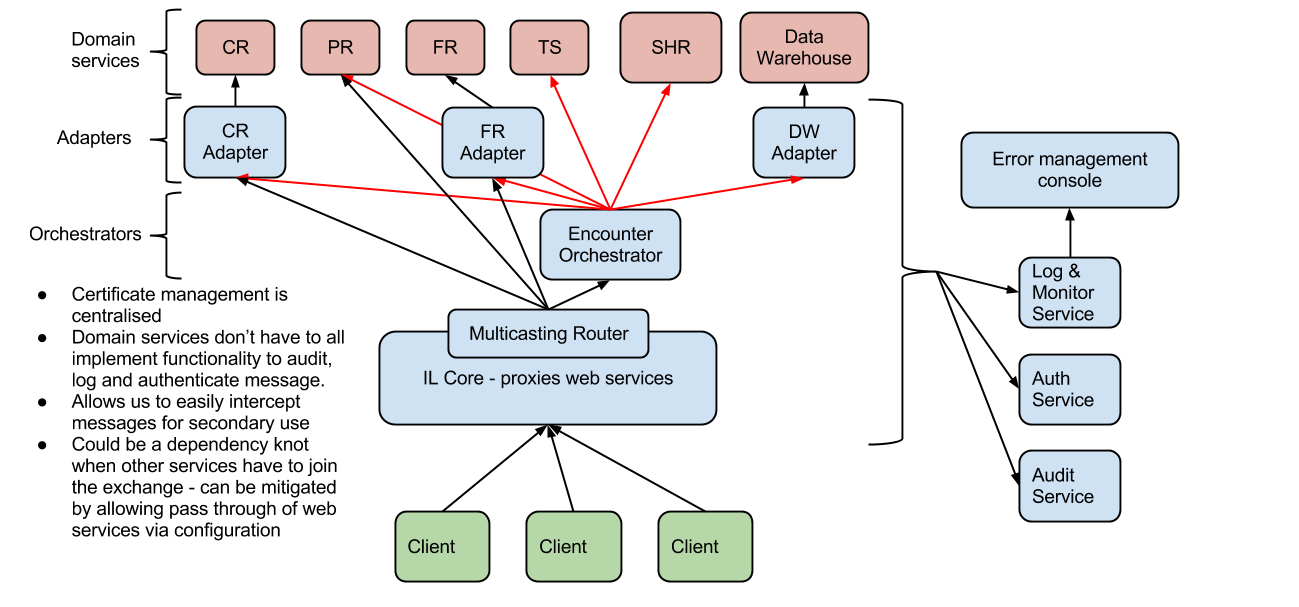...
- Provide a central point for authentication and authorization to the HIE services.
- Log, audit and monitor communications with the components of the HIE.
- Provide error management and transaction monitoring information to the administrators of the HIE.
- Provide transaction orchestration services as well as adapter services to transform message between different message formats.
The architecture
Below, the architecture of the Interoperability Layer is shown in the context of the other expected services and registries. The Interoperability Layer components are show in blue, the domain services (registries) are shown in red and the clients are shown in green.
The core (thin proxy) component
...
The interoperability layer core component contacts each one of these services when it receives a message to ensure the appropriate information is stored. It then passes the message on to the router where it is sent to the correct upstream service. The routers make use of a publish and subscribe pattern so that messages can be routed to multiple interested parties. This allows for secondary use of the messages received by the HIE. For example, encounter message could be routed to the SHR as well as an aggregation service where they could be aggregated and submitted to an aggregate data store such as DHISa data warehouse.
The orchestrator and adapter services
...
